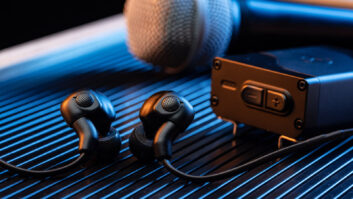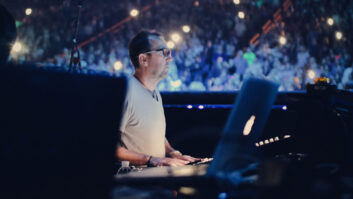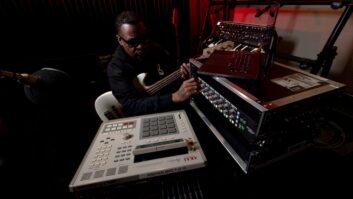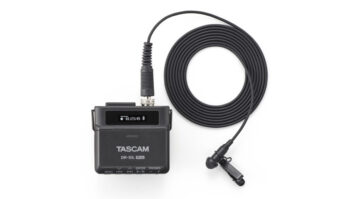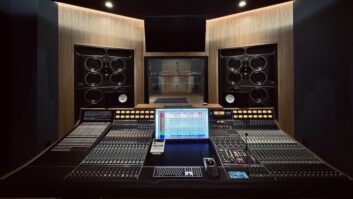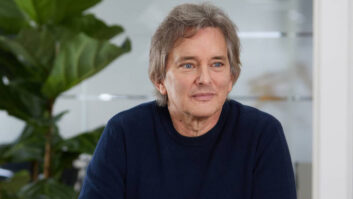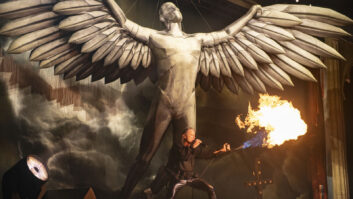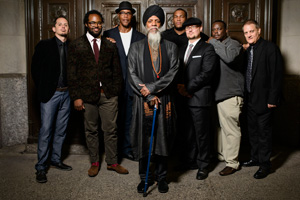
From left: John Ellis, Jason Marshall, Ed Cherry, Dr. Lonnie Smith, Kwame Bell, Ian Hendrickson-Smith, Jonathan Blake, Andy Gravish
Photo: Jacob Blickenstaff
Hammond B3 organ master Dr. Lonnie Smith teamed up with alto saxophonist Ian Hendrickson-Smith (a former member of the Dap-Kings) to re-imagine some of Dr. Smith’s earliest recorded songs for In the Beginning, Volumes 1 & 2, which was released on October 15 on Dr. Smith’s Pilgrimage Productions label. Following five decades with appearances on more than 70 albums, Dr. Smith revisited 12 original songs from his first 10 years as a recording artist.
“People keep asking me about these tunes,” Dr. Smith says, “why I don’t play them and how come they can’t find them. Basically I think it was time for that. This album was a long time coming.”
Co-producer Hendrickson-Smith assembled a band of New York City musicians—Ed Cherry (guitar), Jonathan Blake (drums), Little Johnny Rivero (congas), Andy Gravish (trumpet), John Ellis (tenor and bass clarinet), and Jason Marshall (baritone sax)—and convened three recording dates at Forrest Sound & Vision (FS&V), which was located in a converted Ford Model T factory in Long Island City, Queens; since this album was completed, FS&V has moved into a different space in Greenpoint, Brooklyn. The studio and event space in Queens had a 25×75-foot main room, two isolation booths, and high ceilings with skylights. FS&V makes its collection of instruments and amplifiers available for recording sessions.
Audiences attended each session. “We set it up like a nightclub,” Hendrickson-Smith says. “Lonnie loved it. The way he plays in front of a crowd brings out a certain charisma and fire. We felt that was the best way to capture his music.”
Engineer and FS&V owner Glen Forrest recorded the octet through a TL Audio M4 tube console to 1-inch tape on a 16-track Tascam MS-16 using numerous ribbon mics and outboard that included Neve, Altec, Telefunken, Universal Audio and TubeTech.
“We had 16 channels to record an 8-piece band,” Hendrickson-Smith says. “We essentially set up like you would play a live show—Doc straight in the center, and then the rhythm section around his left-hand side. Then we just splayed the horns across the other side of the stage, so the band was circling Lonnie. And every guy had his own channel.
“I would say 90 percent of the mics on that recording are ribbons,” he continues. “On the drums, believe it or not, we had one overhead, one mic kind of near the snare and the hi-hat, and then one mic on the kick. But the mix of the drum sound is like 90 percent that one mic, just the overhead, a beyer 160. It’s an amazing drum mic. Then one mic for the congas, one mic for the guitar, an RCA BK5—it’s a [ribbon] mic made shortly after the RCA 77, very directional, lots of rejection. And then on Lonnie we had a direct for the bass and a mic on the bass, then two mics on the cabinet. And then one mic in the room; I believe it was an AKG 414 in omni. And then a vocal mic. But really that’s it, essentially a channel for each guy.

Hendrickson-Smith nicknamed this collection of rackmount units ‘Glen’s Wall Of Hope.’ Engineer/studio owner Glen Forrest’s extensive collection of outboard gear includes Neve 1272, Telefunken V72, Universal Audio LA-610, and Studio Projects VTB mic pre’s, as well as Manley Vari Mu limiter/compressor, Universal Audio/Teletronix LA-2A leveling amplifier, and more. To see a complete equipment list, visit Forrest Sound & Vision.
Photo courtesy of Ian Hendrickson-Smith
“It bears mentioning, too, all the reverb on this record—like for the organ—is going through an EMT 140, which is a big plate reverb. The drums are going through a BK 20, a really old spring reverb. And all the horns are going through a Demeter RV1. That’s a pretty new spring reverb,” Hendrickson-Smith adds. “And [there were] no computers!” [Laughs]
Engineer Forrest compressed very minimally and let the tape do all the work. Hendrickson-Smith took the tracks back to his studio in New Jersey and mixed in Pro Tools, making extensive use of Universal Audio plug-ins.

Dr. Lonnie Smith Octet
“Because everything was already analog to begin with and we already had the reverbs printed in separate tracks, it was pretty easy to make it sound good,” Hendrickson-Smith says. “I’m a hard panner; I tend to mix records that sound the way that my favorite records sound like. So I put the drums all the way on one side, and I put the guitar all the way on the other side, with Doc right in the center and then just peppered the horns and the percussion. I’m always trying to create a picture with the mix so it looks like the bandstand looked, making sure that whoever’s trying to be the focal point is actually the focal point. We made sure while recording that leakage wasn’t an issue between guitar and drums, so I could spread them. I listened to some old Lonnie records, I listened to some new records, and just went to work.”
Dr. Smith characterizes his sound as “a little smooth and dark, and a little edgy with a little noise in there—but not too much,” he says. “The organ is perfect, but it’s not perfect. In other words, the Leslie and the organ have hums and things, and that’s a natural effect for the instrument itself, and you want the organ to breathe that, say that, speak that. If you try to take that out, then you’re taking everything out of the sound. As long as I hear that they’re capturing whatever the instrument is doing at that time—that’s what I want.”

